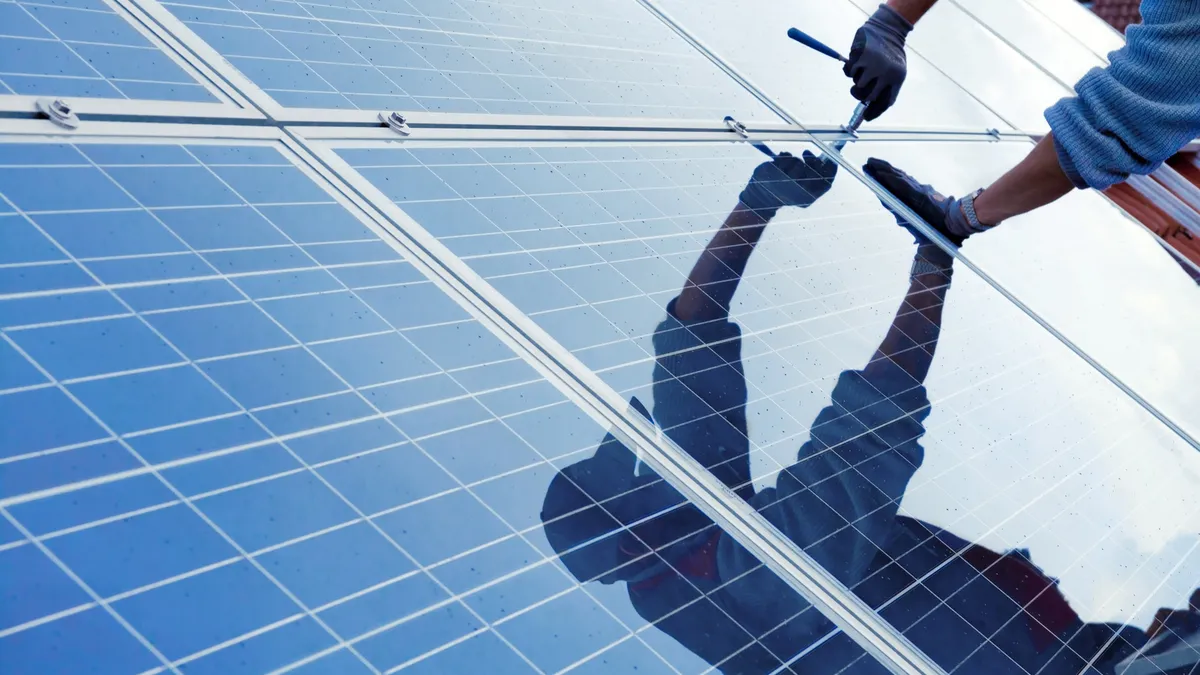San Diego Gas & Electric (SDG&E) has proposed changes to its rate structure it says will ensure customers are equitably paying to maintain the grid, and in the process has caused an uproar among consumer advocates and environmentalists. They argue the proposal is an attack on rooftop solar that will also raise bills for low-income customers.
To understand the changes, utility officials say you have to look back to the California energy crisis in 2000. The legislature, to protect ratepayers, put a four-tiered system in place—and froze rates for the bottom two tiers.
"The initial intent was to protect ratepayers from what appeared to be a very unstable economic situation," said SDG&E communications manager Stephanie Donovan. "With all the market manipulation, rates were going through the roof."
"It was well intended," she said.
But until the California legislature passed rate reform last year, those rates were still capped. And years of rate cases had left customers who used more power paying substantially more than they should have, according to the utility. It said the top two tiers were paying 50% more than the cost to serve them, while the bottom two tiers were paying far less.
"The four tiered-rate structure has created these immense, unfair disparities between the top higher use customers and the lower use," Donovan said.
Who should pay more?
Some advocates say that's more or less as it should be. As the state works to meet aggressive emissions goals, why would a utility reward higher users with less expensive power?
“SDG&E wants to take California, and San Diego, in the wrong direction,” said Mark Toney, executive director for The Utility Reform Network (TURN), in a statement. “We should be rewarding customers who conserve, not raising their bills to subsidize energy hogs. Default time-based pricing could subject low-income customers and senior citizens to rate shock- and is antithetical to statewide goals to reduce emissions.”
TURN is not concerned with the potential impacts on rooftop solar, nor the low-income discount has been mandated by legislators. The ratepayer advocate is instead fighting a new fixed-charge that could be imposed by the utility, which it says will erode the value of efficiencies. And TURN also opposes making a time-of-use rate the default rate, which could happen in 2018 and potentially have severe impacts on customer bills in hot inland areas.
The low-income argument, meanwhile, is at play on two levels. Because of the capped tiers, low income rates are actually lower than they should be, the utility says. And because of advances in efficiencies, and the unique geography of the state, at times higher-income rate payers live in regions requiring less energy use.
"The assumption was, low income meant low energy use. And we have found that is not really the case, more recently," Donovan said. The coastal areas tend to require less power for air conditioning—and are also known for higher incomes and property values. Inland areas often require more power for cooling, she said, and those homes are not built as energy-efficient.
"It's not energy hogs versus energy misers, as some opponents of rate reform would have you believe," Donovan said. "And I don't want to make it about rich versus poor because that's not the case either … what it really is about is fairness."
The new rate structure includes two tiers with about a 2-cent per kWh difference between them, and a third, optional, non-tiered time-of-use rate for residential customers. The monthly fee would begin at $5, moving to $10 by 2018; low-income customers would pay a monthly fee half that rate.
Rates would also shift for low income customers, though they would move up. Because of the rate disparity the capped tiers created, the California Alternate Rates for Energy (CARE) discount was hovering around 41%, Donovan said, instead of where it started at 20%.
Last year the state's legislature passed AB 327, which called for rate reform at the state's three largest investor owned utilities. It also mandated the CARE discount be between 30% and 35%, and so SDG&E would reduce it 1% in 2015 and by 2% each year after that until 2018, when it would be a 34% discount.
The question of solar fees
AB 327 also allows utilities to charge up to $10 per month in fixed charges (though it will be phased in, and will be a maximum of $5 for low income consumers). But as you increase the the fixed portion of a bill, the value proposition for solar starts to decline.
According to Bryan Miller, co-chairman of The Alliance for Solar Choice, SDG&E is "one of the more aggressively hostile to solar utilities in the country."
"They've been defeated every time they've tried to impose fees," he said. "They certainly have a commission in California who has a long history of defending solar against monopolistic attacks and we hope that will continue to be the case."
"California will work its way through the case over a lengthy time," Miller added.
On that point, there's no debate. SDG&E said it expects a decision by the middle of next year, followed by a four-year rollout of the new rates. And the utility stresses, "we want fair rates that give customers the power to make rate choices."
But that said, the new rates will have an impact on solar customers. Because according to SDG&E, right now they are not paying their fair share.
"Frankly, it is our position that the current net energy metering structure allows those customers who can put rooftop solar on their home or businesses, they can walk away from essentially all of the other costs that they normally would be paying ," Donovan said. "Solar customers are still connected to the grid and they're still using the grid. Our position is everyone who uses the grid should pay to maintain it."























